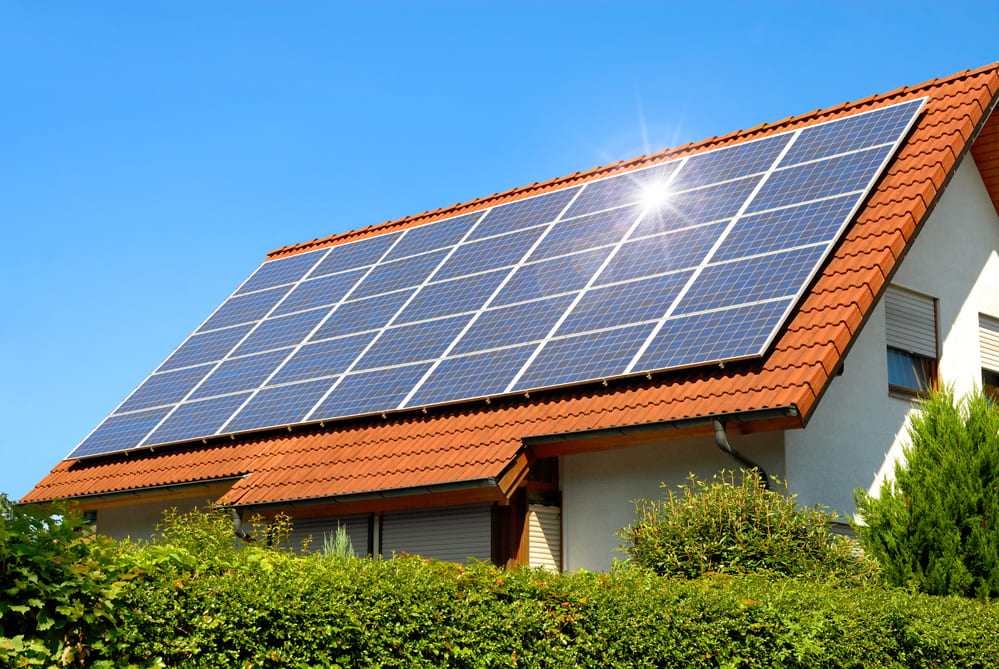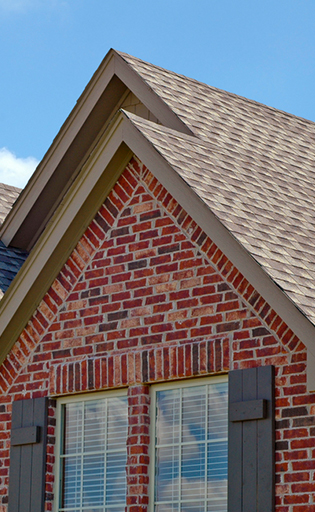What You Should Know Before Installing Solar Panels
Check out these roof requirements for a solar home
Mar 6, 2023

A great purchasing decision is the result of careful planning and thorough examination. Buying and setting up solar panels is no exception. Solar panels are a huge investment. It is crucial to make correct calculations and be knowledgeable about solar panels and their specifications.
 Solar energy is an excellent long-term investment. However, going solar requires some major considerations, including an inspection of your roof.
To make this process a little easier, here are the key aspects of installing solar panels on your roof.
Solar energy is an excellent long-term investment. However, going solar requires some major considerations, including an inspection of your roof.
To make this process a little easier, here are the key aspects of installing solar panels on your roof.

 Some roofing materials are more suitable than others as they offer a more stable foundation.
Some roofing materials are more suitable than others as they offer a more stable foundation.
How do you know if your roof is suitable for solar panels?
 Solar energy is an excellent long-term investment. However, going solar requires some major considerations, including an inspection of your roof.
To make this process a little easier, here are the key aspects of installing solar panels on your roof.
Solar energy is an excellent long-term investment. However, going solar requires some major considerations, including an inspection of your roof.
To make this process a little easier, here are the key aspects of installing solar panels on your roof.
Your roof should be facing south at 180°
The best roof for solar panels faces south at 180° true orientation, i.e.195° on a magnetic compass. This direction provides maximum exposure of your panels to the sunlight. However, roofs slanting eastwards or westwards are also good matches for solar panels, provided that they meet further requirements.Your roof should have 400-600 sq. ft. of open space
You need to make sure that your roof has enough space for the solar panels. Roofs that are clear from skylights, dormers, or chimneys are very suitable for solar panel installation. Most solar power systems use up to 20-30 panels, with each panel acquiring 18 sq. ft. Therefore, ensure that your roof has 400-600 sq. ft. of free space.Roofs slanted at 30-45° are ideal
Flat roofs can undoubtedly accommodate solar panels, but the mounting system will be quite different from panels installed on slanted roofs. Thus, roofs having a slant of 30-45° are the perfect match for solar panels.Shingles work best for solar panels
Shingle tiles are not a requirement for going solar. However, they are a convenient and popular material for solar panel installation. Roofs constructed of clay or slate have a higher chance of breakage during installation, even if extra precautions are taken.Make sure that your roof is in perfect condition
Before installing the solar panels, ensure that your roof is in the appropriate condition. After an inspection, it may be evident that your roof needs repair or replacement. This is a clear sign that it is not the right time to install solar panels. If you notice your roof giving signs of aging, such as cupping or lifting, it’s better to replace it before installing a solar power system. By doing so, you will avoid a situation where you may have to remove newly installed solar panels to replace a deteriorating roof.Your roof’s exposure to sunlight
Your roof should get 6 hours of sunlight daily. For your solar panels to function properly and produce electricity efficiently, they should ideally be exposed to sunlight between 9 am to 4 pm. Nearby trees, buildings, or roof obstructions like chimneys or dormers can cause shading, which reduces the amount of electricity generated by your panels.Your roof’s ability to hold solar panels
Solar panels add weight to the structure of your roof. If the weight of the solar panels is greater than the capacity of your roof, then your roof is at risk of collapsing. This is extremely dangerous and costly to fix. To prevent such situations, it’s important to hire a professional to evaluate if additional support is needed for a secure installation of solar panels. In general, a solar panel weighs between 1-2 kg per square foot, with the mounting structures. This weight is usually within the acceptable limits of what a roof can carry. The table below indicates the weight per square footing (100 sq. ft.) for some roofing materials:| Roofing Material | Weight (Kg) |
|---|---|
| Wood | 90-165 |
| Asphalt Shingles | 85-110 |
| Metal | 35-65 |
| Clay | 270-815 |
| Slate | 365-450 |
| Plastic Polymer | 30-135 |
| Concrete | 250-450 |
How do you protect your solar panels from extreme weather?

Ensure that rainwater does not damage your roof
Rainwater runs down the roof into the gutters. With the installation of solar panels, equipment like wire harnesses and racking can prevent the proper flow and drainage of the water. Sometimes, solar equipment can make the water flow in different directions, which can result in leaks and other problems. These problems will require repairs as the panels will need to be removed. The best way to avoid such a problem is to consult with a roofing contractor. They will present a comprehensive plan to ensure that installation does not impact water flow.Protect your panels from storm damage
Hurricanes, lightning storms, hail, and other severe weather conditions can damage your solar power equipment. Precautionary steps for protecting solar panels from harsh weather:Best roofing materials for solar panels
 Some roofing materials are more suitable than others as they offer a more stable foundation.
Some roofing materials are more suitable than others as they offer a more stable foundation.

